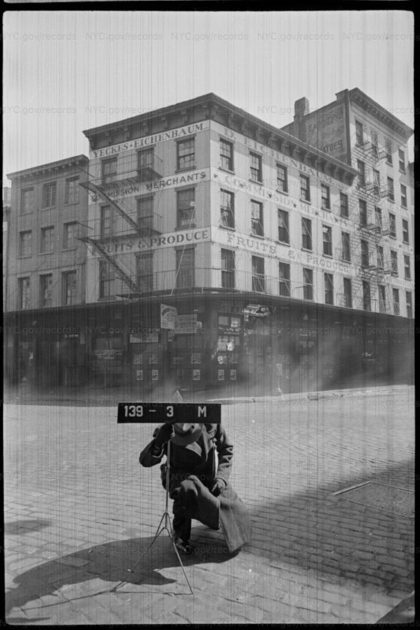In the News: Looking back on Washington Street
WASHINGTON STREET IN THE ’60S
amNY ran a group of photos taken by Edward LaGrassa 50 years ago, and many of them are of the neighborhood (and Soho). The photos were donated to the non-profit Village Preservation, and I’ll see if they can let me run a series (that’s not one of them, above — that’s from the Municipal Archives in the ’40s). But in the meantime here’s a glimpse of buildings that stood before the Washington Street Renewal Project in 1969.
TOURIST STABBED ON CHAMBERS STREET 1 TRAIN
PIX11 reports that a tourist was hospitalized Sunday night after being stabbed in the chest with a screwdriver in an unprovoked attack aboard a No. 1 subway near the Chambers Street station in Tribeca, according to the NYPD.
GLUT OF CONDOS IN FIDI
The Real Deal reports that the Financial District has the most unsold inventory of any New York City neighborhood, with 1,433 new condos available, according to data by Marketproof reported by Bloomberg News. Bloomberg’s data also shows only 16 percent of workers are in their offices as of April.
AZIKIWE MOHAMMED AT THE YEH ART GALLERY
The Times arts section had a feature on Tribecan Azikiwe Mohammed’s installation at the Yeh Art Gallery at St. John’s University in Jamaica, which unfortunately has closed (I will get ahead of it next time). He had 40 pieces in the show, which celebrated “everyday heroes and small acts of care” through textiles that he hung and assembled in a room transformed with wood flooring and laminated walls into a country cabin.
















This is more like “Looking Back on Chambers Street”
https://www.nydailynews.com/new-york/story-bernhard-goetz-subway-vigilante-article-1.815968
“[…] Car No. 7657, seventh in a 10-car southbound IRT Seventh Ave. Express train, would become the symbol of everything that everyday law-abiding citizens felt about everyday urban thugs, all the rage, all the disgust, all the impotence all the fear.
” Aboard No. 7657, a bespectacled, mild-seeming white man found himself surrounded and intimidated by four black youths who asked him first for the time, then for a match and finally for $5.
” ‘Yes,’ he said. ‘I have $5 for each of you.’
“Then he stood up, pulled the unlicensed .38 from the waistband of his jeans and started firing.
“As more than a dozen other passengers gasped, his four tormentors went down.
“With the sounds of the shots still ringing off the car’s metal walls and the smell of cordite rising in the air, the gunman walked over to one of the fallen young men. ‘You don’t look so bad,’ he mused, then calmly shot him again.
“As the train lurched to a stop in the Chambers St. station, the gunman leaped onto the tracks and fled into the tunnel.
” […] And so, in the City of New York, three days before Christmas 1984, there arrived the legend of The Subway Vigilante.
“Certainly the vigilante’s victims handily fit every thug stereotype. They were Darryl Cabey, 19; Troy Canty, 19; Barry Allen, 18; and James Ramseur, 18: four buddies from the Bronx, all possessing arrest records. Aboard the speeding train, three of them were carrying screwdrivers. […]”
In the absence of leadership, every man and woman is on his or her own.